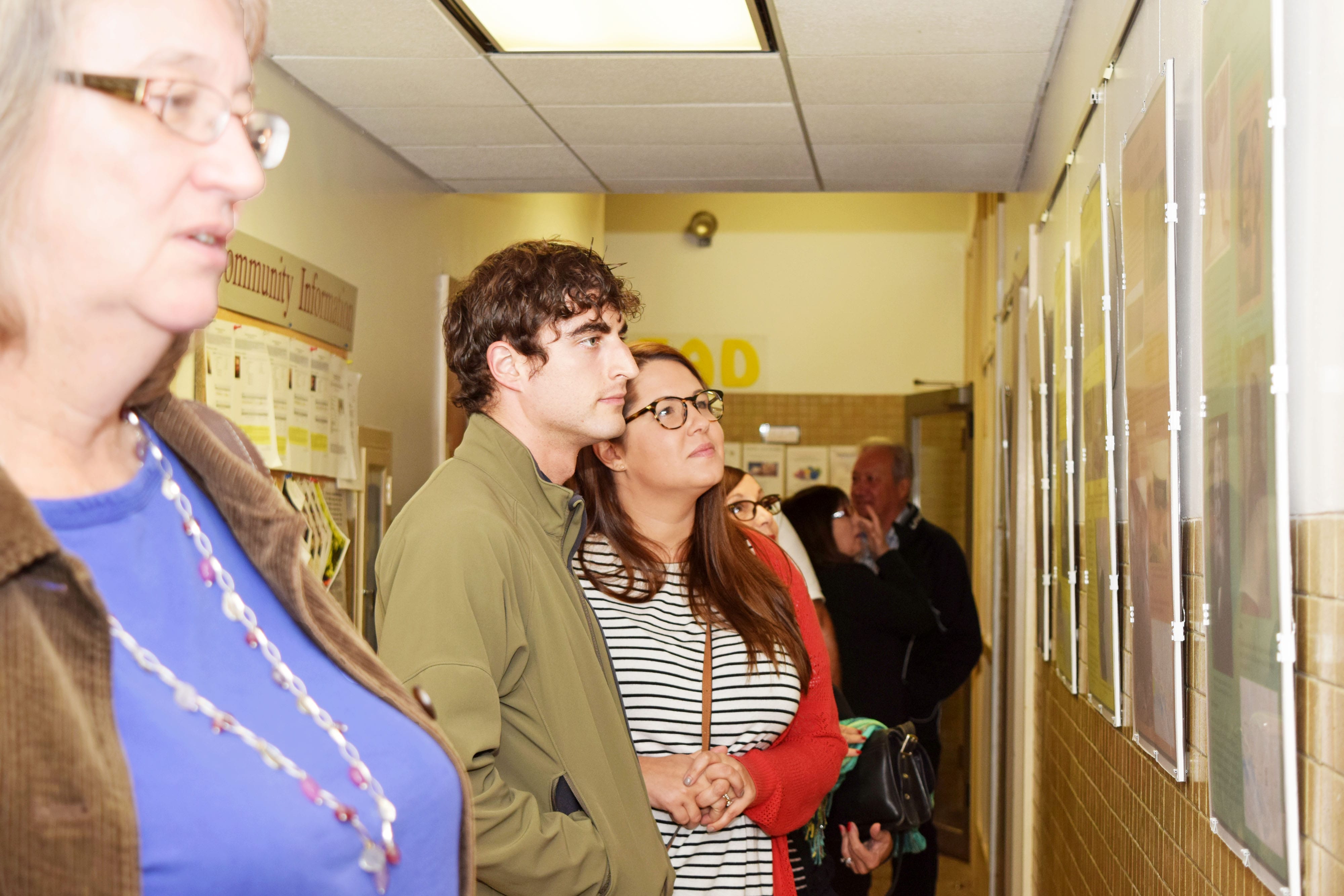MEDFORD — Sculptor Emilius Rogers Ciampa left his mark on Medford during the course of his long life, creating work that embodied the American spirit and honored notable Medford residents.
Now he is back in the public eye with city celebrations of Ciampa’s work, his contributions to the soon-to-be-renovated Chevalier Theatre, and tentative plans to restore Ciampa’s work in Oak Grove Cemetery.
Ciampa (1896-1996) designed the Chevalier Theatre plaques commemorating World War I aviator, Godfrey Chevalier, and the City Hall bust of Medford’s first mayor, Samuel C. Lawrence.
“The more I learned about him, the more I liked him. I respect what he did,” said historian Dee Morris.
Morris kicked off the local celebration of Ciampa’s life and work with an October 12 lecture at the Medford Public Library. Since then, Ciampa’s family, including great-grandson, Jason Stoller, have helped piece together the history of Ciampa’s life and work and the imprint he left on Medford, including civic showpieces such as the Supreme Sacrifice (World War I) and Angel of Victory and Peace (World War II) sculptures in Oak Grove Cemetery.
“It’s a great honor that he is being remembered, and surprising to see how much of an impact he’s had in Medford,” said Stoller. “He would always paint with me and show me the sculptures but I couldn’t touch them. This brings back lots of good memories.”
Originally from Avellino, Italy, Ciampa immigrated to America aboard the Canopic, arriving in Boston with his mother and siblings in 1906. His July 6, 1918 naturalization papers are on display in the library. Ciampa later attended the North Bennet Street School, a vocational institute in Boston’s North End.
“He had a difficult time learning English so his teachers inspired him to draw and be creative,” Morris said.
Ciampa eventually joined the army and became a camouflage artist, applying his art skills to shield troops from enemy forces. He lived in Florida and Cuba with his wife, Ethel, eventually settling in Medford with his family in 1926.
“What I love is he kept calling Medford his hometown,” noted Morris. “That shows how deeply invested he was in our city.”
Ciampa’s pieces depict the patriotism, endurance, and compassion of the American people in different aspects of military service. At the top of a grand staircase in Oak Grove Cemetery is the statue Ciampa began constructing in 1936.
The soldier’s uniform is ripped, and his sleeves are rolled up, as if he had been in combat. With open arms, the valiant soldier stands on his gun.
“It’s stunning. It’s embracing. The city of Medford loved Ciampa’s design, but people in higher places didn’t. If it’s commemorating the war, he should have a gun, so things got put on hold because of bureaucratic arguments,” Morris said of the statue that was dedicated in 1941. “I’m hoping in the future we will get funds to help preserve this site. I’d love to see this restored.”

